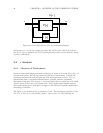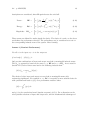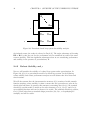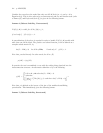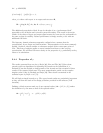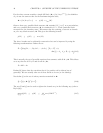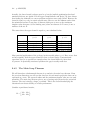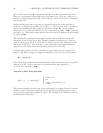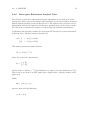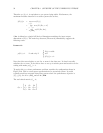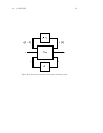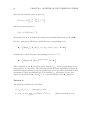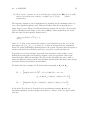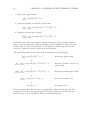50 CHAPTER 2. OVERVIEW OF THE UNDERLYING THEORY
and two block structures, ∆
1
(compatible with M
11
)and∆
2
(compatible with M
22
).
There are two perturbed subsystems that we can study here: F
u
(M,∆
1
), where ∆
1
is
closed in a feedback loop around M
11
;andF
l
(M,∆
2
), where ∆
2
is closed in a feedback
loop around M
22
.
We have already seen that in the case of a dynamic system, the robust stability of
F
u
(M,∆
1
) is analyzed by checking that µ
1
(M
11
) < 1. Here we have used µ
1
to indicate
that we are considering it with respect to the block structure ∆
1
. In the constant
matrix case, we say that the LFT, F
u
(M,∆
1
) is well posed for all ∆
1
∈ B∆
1
if and only
if µ
1
(M
11
) < 1. This simply means that the inverse in the LFT equations is well defined
for all ∆
1
∈ B∆
1
.
The well posedness discussion above applies equally well to F
l
(M,∆
2
) and we will
denote the µ test for M
22
by µ
2
(M
22
). However, instead of looking at µ
2
of M
22
,we
want to look at µ
2
(F
u
(M,∆
1
)). Note that F
u
(M,∆
1
) has the same dimensions as M
22
and in fact F
u
(M,∆
1
)=M
22
when ∆
1
= 0. In otherwords, what happens when we
apply the µ
2
test to the whole set of matrices generated by F
u
(M,∆
1
).
To answer this question we need to introduce a larger block structure, denoted here
simply by ∆. This is simply the diagonal combination of the previous two structures:
∆ = diag(∆
1
,∆
2
).
Note that this has compatible dimensions with M itself and the associated µ test will be
denoted by µ(M). Now we can answer the question about what happens to
µ
2
(F
u
(M,∆
1
)) for all ∆
1
∈ B∆
1
.
Theorem 9 (Main Loop Theorem)
µ(M) < 1 if and only if
µ
1
(M
11
) < 1
and
max
∆
1
∈B∆
1
µ
2
[F
u
(M,∆
1
)] < 1
This theorem underlies the fact that robust performance is a simple extension of robust
stability. It has a much more significant role in developing connections between the µ
theory and other theoretical aspects of control. The example in the following section is
an illustration of this point.



